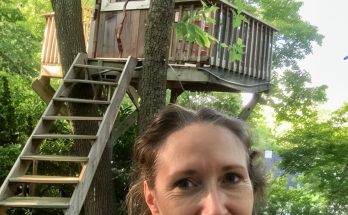When you look at a majestic mountain landscape, do you spot a soaring eagle or a sturdy goat climbing the ridges first? Believe it or not, what you notice first might reveal more about your brain than you realize. Whether it’s the eagle or the goat, your perception taps into how your brain processes visual information, showcasing the incredible ways we each interpret the world around us.

Our brains are fascinating machines, constantly working to help us understand the environment in unique ways. They are divided into two hemispheres—the right and left—which handle information differently. Typically, right-brained individuals are more creative, intuitive, and visual. These folks excel in artistic tasks and tend to focus on abstract, broad patterns. If you’re right-brained, you might notice shapes and figures hidden in the natural curves of the mountains, such as a goat scaling the rocky slopes.
On the other hand, left-brained individuals are more logical, detail-oriented, and analytical. They excel at structured tasks like solving puzzles or handling mathematical problems. If you lean toward left-brain thinking, you might notice structured shapes more easily, like an eagle with its outstretched wings outlined by the sharp, angular peaks of the mountains.
Goat vs. Eagle: What Do You See First?
Take a moment and think about that landscape again. Do you see the form of a goat among the rocks, or does the eagle in the sky stand out more clearly? This optical illusion is a form of pareidolia—a psychological phenomenon where our brains recognize familiar patterns or objects in random stimuli, like seeing shapes in clouds or rock formations. While both the goat and the eagle can exist within the same image, your initial perception reveals something about how your brain interprets visual cues.
Seeing the Goat: A Right-Brained Approach
If the goat jumps out at you first, it could suggest that your brain is processing the image more abstractly. You’re likely focusing on the subtle connections between shapes, curves, and the overall flow of the scene. In this case, the goat’s body may blend into the ridges of the mountain, with its horns and legs forming from the uneven, rounded contours of the landscape. This suggests that your mind is tuned in to broader patterns and natural shapes, ones that might not be immediately apparent to others.
People who spot the goat first may excel in artistic or creative pursuits. They tend to see the world in fluid, organic forms and are adept at making sense of abstract concepts. Their imagination fills in the blanks, helping them identify hidden forms that others might overlook.
Spotting the Eagle: A Left-Brained Perspective
If the eagle is what stands out, your brain is likely focusing on a more defined, structured image. The eagle’s wings may be highlighted by the sharp mountain peaks, with its head forming from the cloud shapes above. This type of perception relies on your brain’s ability to recognize distinct, angular shapes that are clear and easy to define.
If the eagle is your first image, you may excel in areas requiring logical thinking, attention to detail, and problem-solving. People who see the eagle first tend to approach tasks methodically, relying on clarity and structure rather than abstract forms.
There’s No Right or Wrong Answer
This fun visual exercise highlights some general tendencies in brain function, but it’s important not to overanalyze. Just because you see the goat or eagle first doesn’t mean you are strictly right-brained or left-brained. In truth, everyone’s brain is a combination of creativity and logic, and different parts activate depending on the situation.
What this exercise does show is how flexible and fascinating our perceptions can be. Our brains can switch between abstract thinking and structured problem-solving with ease. The image you see might reflect your current mood, your focus at the time, or even how you uniquely interpret the world.
Our perception of images like the goat or the eagle is influenced by many factors, including past experiences, cultural background, and personal preferences. This ability to interpret patterns in different ways is one of the things that make us human. From seeing faces in the clouds to finding hidden animals in mountain ridges, our minds are always working, trying to make sense of the world.
Why Do We See Things Differently?
The ability to spot familiar shapes in unfamiliar places is hardwired into us. Our brains evolved to recognize patterns as a survival mechanism, helping early humans identify predators or food sources in nature. This constant search for patterns means that our brains sometimes “fill in the blanks,” leading us to see familiar shapes even when they aren’t there.
In today’s world, this pattern-seeking behavior shows up in more playful ways, like seeing animals in rock formations or faces in clouds. That’s why optical illusions and visual puzzles captivate us—they challenge our brains to think outside the box.
Whether you see the goat climbing or the eagle soaring, there’s no right or wrong. Visual perception is a deeply personal experience, shaped by who we are and how our minds work. Next time you’re out in nature, take a moment to see what hidden figures you can find. It just might reveal something fascinating about how you view the world.



